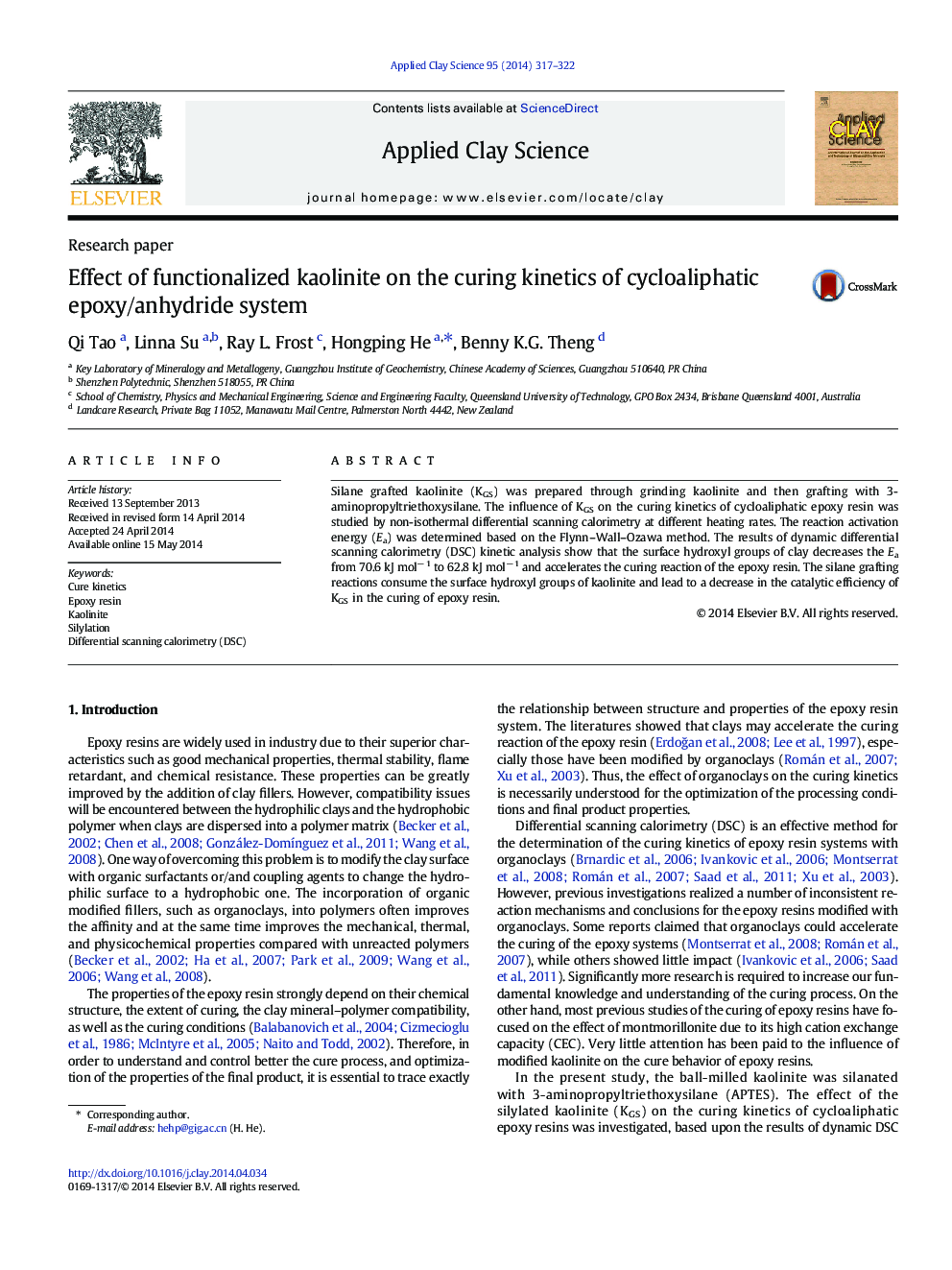| Article ID | Journal | Published Year | Pages | File Type |
|---|---|---|---|---|
| 1694824 | Applied Clay Science | 2014 | 6 Pages |
•Grafted kaolinite (KGS) was prepared by silylation of ground kaolinite (KG).•Effect of KGS on epoxy curing was evaluated by non-isothermal DSC method.•Surface –OH of clay decreases activation energy and accelerates curing reaction.•Less surface –OH of KGS leads to lower catalytic efficiency of epoxy curing.
Silane grafted kaolinite (KGS) was prepared through grinding kaolinite and then grafting with 3-aminopropyltriethoxysilane. The influence of KGS on the curing kinetics of cycloaliphatic epoxy resin was studied by non-isothermal differential scanning calorimetry at different heating rates. The reaction activation energy (Ea) was determined based on the Flynn–Wall–Ozawa method. The results of dynamic differential scanning calorimetry (DSC) kinetic analysis show that the surface hydroxyl groups of clay decreases the Ea from 70.6 kJ mol− 1 to 62.8 kJ mol− 1 and accelerates the curing reaction of the epoxy resin. The silane grafting reactions consume the surface hydroxyl groups of kaolinite and lead to a decrease in the catalytic efficiency of KGS in the curing of epoxy resin.
